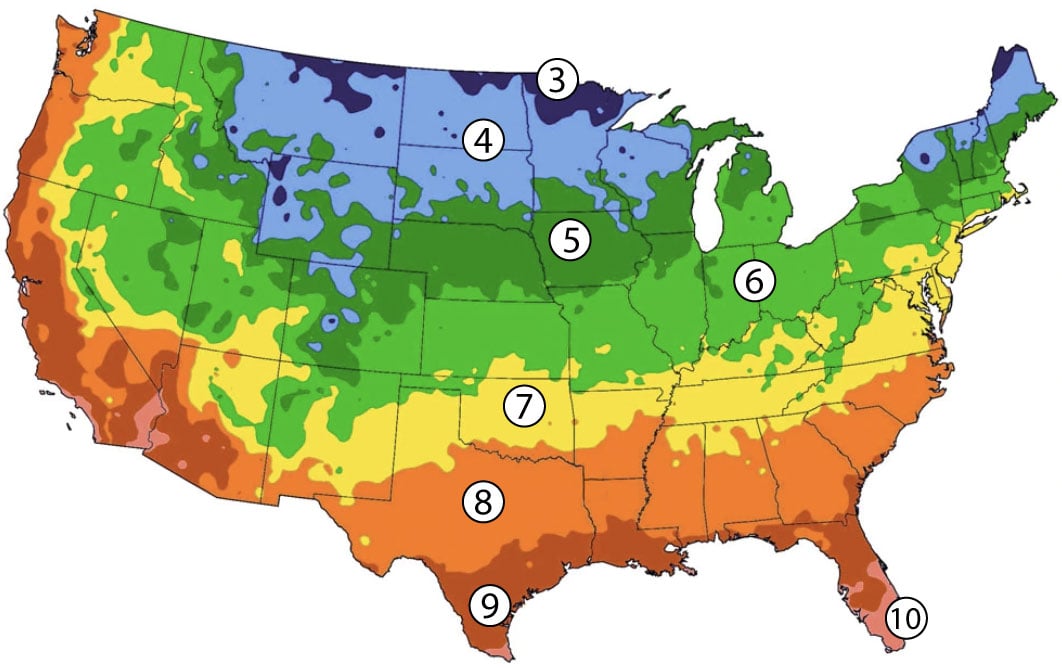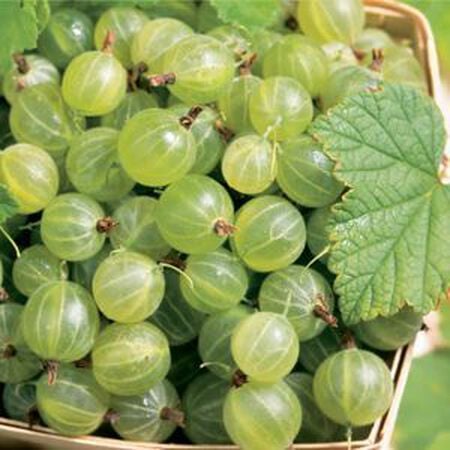Pixwell, Gooseberry Plant
Out of Stock
Key Attributes
Product Details
Plant Height
2-3'Sow Depth
6"Breed
Open-pollinatedSun
Full SunRoot Age
1 Year PlantLife Cycle
PerennialCategories
FruitDays To Maturity (# Days)
365Components
Growing Instructions
![]() Learning Download: How to Grow Gooseberries
Learning Download: How to Grow Gooseberries
Gooseberries grow most anywhere in the United States, however the American gooseberries will grow slightly smaller than the European gooseberries. Their flavor profile can range from tart to tropical. Gooseberries are a perennial that can reach up to 60 inches high.
Before Planting: Gooseberries thrive in cool, well-drained, fertile soil.
Planting: Plant gooseberry bushes 4 to 6 feet apart.
Watering: Watering is seldom required but in very dry spells water every 14 days.
Fertilizer: Gooseberries do require nitrogen, but excessive nitrogen can cause disease such as mildew. Add a dressing of potassium annually with a half-ounce of actual potassium per square yard.
Days to Maturity: Gooseberries vary in color, so the best way to tell if they are ripe is to squeeze them. If you squeeze them when ripe, the gooseberry will give a little.
Harvesting: Gooseberries are commonly picked when they are full sized but underripe. Gooseberries don’t continue to ripen after they are harvested, so if you want to eat them fresh, pick when ripe.
Tips: Do not use the bushes as a continuous hedging, because they do not grow well when planted close to each other.
Shipping Schedule
Gooseberry plants will ship at the appropriate time for your planting zone. The chart below estimates when your gooseberry plants will arrive. You will receive an email notifying you when your strawberry roots ship giving you a few days to prepare for planting.
This item’s size, weight, or shape may require an additional shipping surcharge based on the shipping location selected. Specific charges will be displayed during checkout. We are unable to take specific shipping dates at this time.
*This product is perishable and does not ship outside the United States.
|
 |
Our Seed Promise
 "Agriculture and seeds" provide the basis upon which our lives depend. We must protect this foundation as a safe and genetically stable source for future generations. For the benefit of all farmers, gardeners and consumers who want an alternative, we pledge that we do not knowingly buy or sell genetically engineered seeds or plants.
"Agriculture and seeds" provide the basis upon which our lives depend. We must protect this foundation as a safe and genetically stable source for future generations. For the benefit of all farmers, gardeners and consumers who want an alternative, we pledge that we do not knowingly buy or sell genetically engineered seeds or plants.
The mechanical transfer of genetic material outside of natural reproductive methods and between genera, families or kingdoms, poses great biological risks as well as economic, political, and cultural threats. We feel that genetically engineered varieties have been insufficiently tested prior to public release. More research and testing is necessary to further assess the potential risks of genetically engineered seeds. Further, we wish to support agricultural progress that leads to healthier soils, to genetically diverse agricultural ecosystems, and ultimately to healthy people and communities.
To learn more about the "Safe Seed Pledge" please visit www.councilforresponsiblegenetics.org.
Key Attributes
Product Details
Plant Height
2-3'Sow Depth
6"Breed
Open-pollinatedSun
Full SunRoot Age
1 Year PlantLife Cycle
PerennialCategories
FruitDays To Maturity (# Days)
365Components
Growing Instructions
![]() Learning Download: How to Grow Gooseberries
Learning Download: How to Grow Gooseberries
Gooseberries grow most anywhere in the United States, however the American gooseberries will grow slightly smaller than the European gooseberries. Their flavor profile can range from tart to tropical. Gooseberries are a perennial that can reach up to 60 inches high.
Before Planting: Gooseberries thrive in cool, well-drained, fertile soil.
Planting: Plant gooseberry bushes 4 to 6 feet apart.
Watering: Watering is seldom required but in very dry spells water every 14 days.
Fertilizer: Gooseberries do require nitrogen, but excessive nitrogen can cause disease such as mildew. Add a dressing of potassium annually with a half-ounce of actual potassium per square yard.
Days to Maturity: Gooseberries vary in color, so the best way to tell if they are ripe is to squeeze them. If you squeeze them when ripe, the gooseberry will give a little.
Harvesting: Gooseberries are commonly picked when they are full sized but underripe. Gooseberries don’t continue to ripen after they are harvested, so if you want to eat them fresh, pick when ripe.
Tips: Do not use the bushes as a continuous hedging, because they do not grow well when planted close to each other.
Shipping Schedule
Gooseberry plants will ship at the appropriate time for your planting zone. The chart below estimates when your gooseberry plants will arrive. You will receive an email notifying you when your strawberry roots ship giving you a few days to prepare for planting.
This item’s size, weight, or shape may require an additional shipping surcharge based on the shipping location selected. Specific charges will be displayed during checkout. We are unable to take specific shipping dates at this time.
*This product is perishable and does not ship outside the United States.
|
 |
Our Seed Promise
 "Agriculture and seeds" provide the basis upon which our lives depend. We must protect this foundation as a safe and genetically stable source for future generations. For the benefit of all farmers, gardeners and consumers who want an alternative, we pledge that we do not knowingly buy or sell genetically engineered seeds or plants.
"Agriculture and seeds" provide the basis upon which our lives depend. We must protect this foundation as a safe and genetically stable source for future generations. For the benefit of all farmers, gardeners and consumers who want an alternative, we pledge that we do not knowingly buy or sell genetically engineered seeds or plants.
The mechanical transfer of genetic material outside of natural reproductive methods and between genera, families or kingdoms, poses great biological risks as well as economic, political, and cultural threats. We feel that genetically engineered varieties have been insufficiently tested prior to public release. More research and testing is necessary to further assess the potential risks of genetically engineered seeds. Further, we wish to support agricultural progress that leads to healthier soils, to genetically diverse agricultural ecosystems, and ultimately to healthy people and communities.
To learn more about the "Safe Seed Pledge" please visit www.councilforresponsiblegenetics.org.




